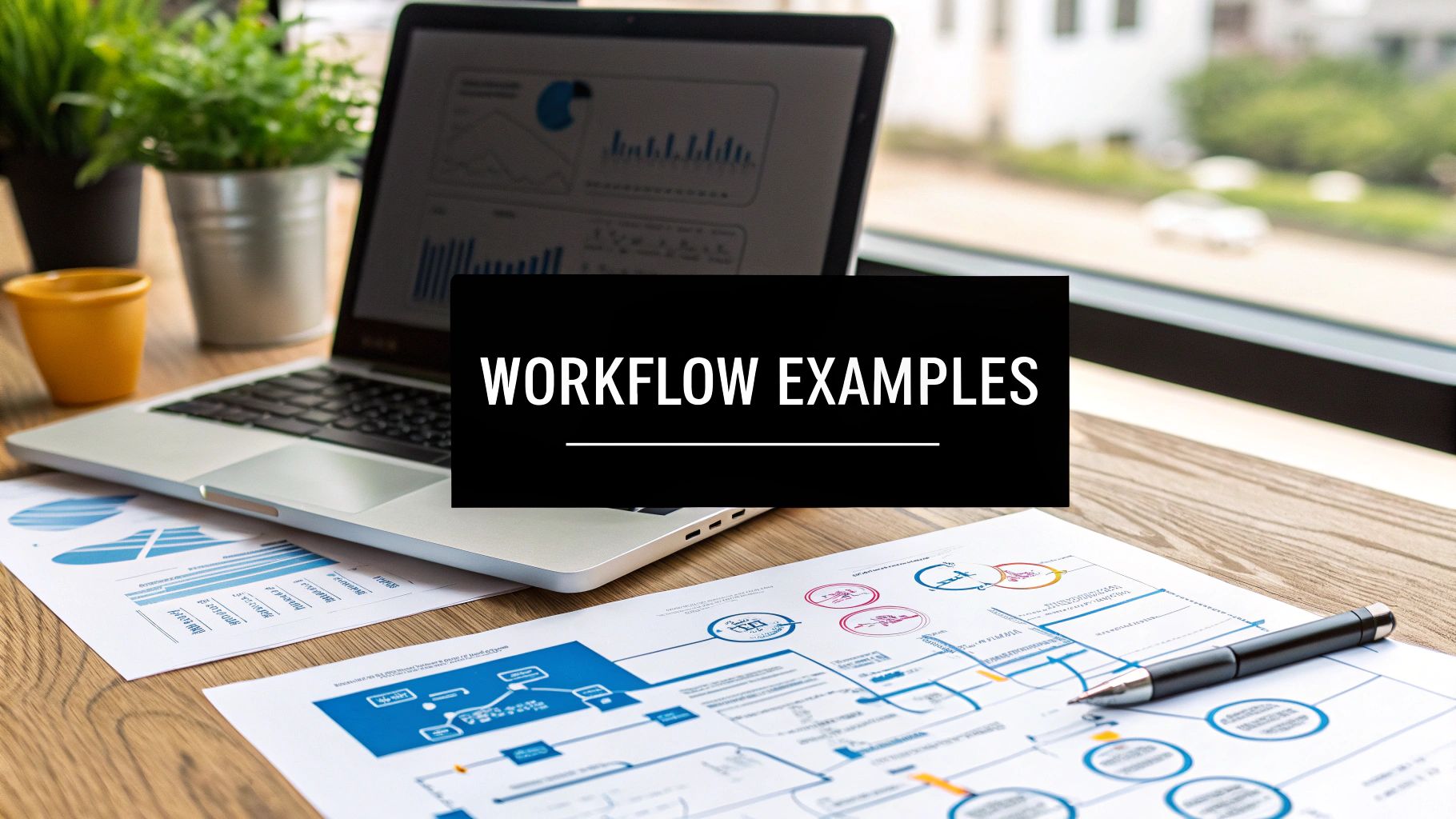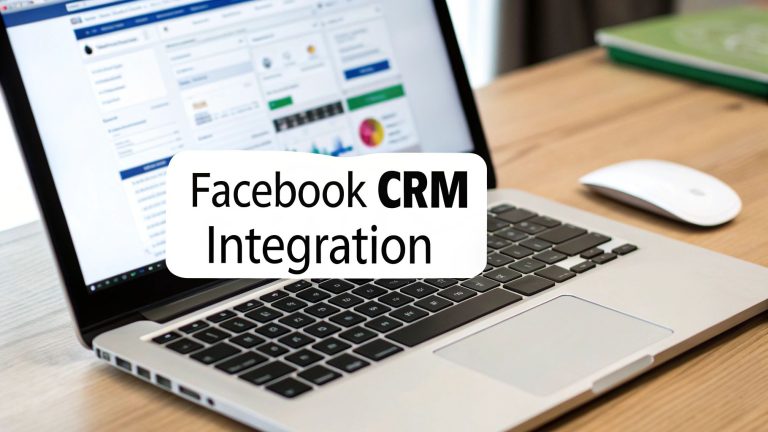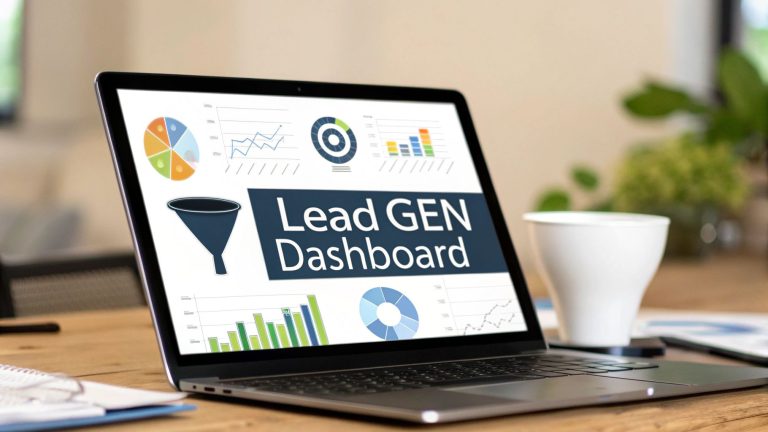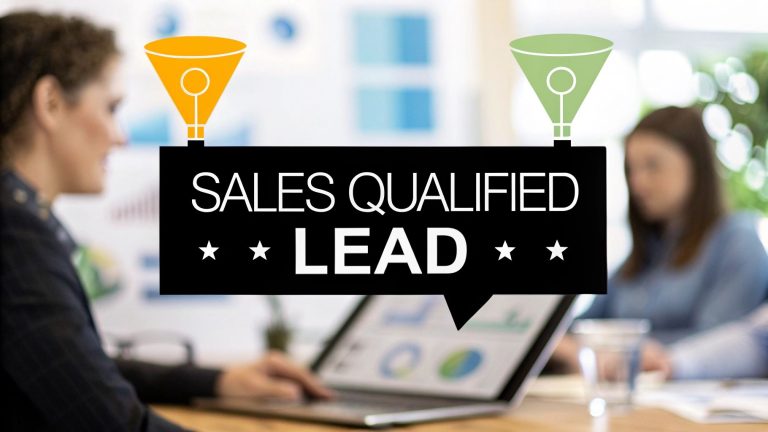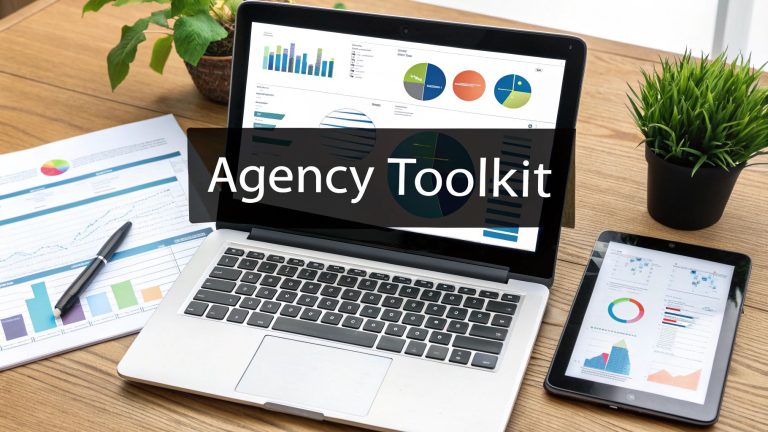Top Marketing Automation Workflow Examples for 2025
Unlocking Growth: How to Put Your Marketing on Autopilot
In a competitive market, manual marketing tasks are a significant roadblock to scaling your business. The key to staying ahead isn't working harder; it's working smarter. This is where marketing automation comes in, transforming repetitive processes into powerful, self-sustaining growth engines. However, knowing where to start can be daunting for many businesses.
This guide moves beyond theory to provide seven essential marketing automation workflow examples you can implement today. For each example, we offer a deep strategic analysis, a tactical breakdown of the steps, and replicable methods for your own campaigns.
A crucial piece of this puzzle, especially for businesses running Facebook ads, is efficient lead handling. Manually downloading lead data creates delays that cost you conversions. Throughout these examples, we will demonstrate how integrating a tool like LeadSavvy Pro can instantly sync your Facebook Lead Form submissions. This integration is key, as it eliminates manual work and allows you to trigger these powerful workflows the moment a lead shows interest. Prepare to turn your marketing efforts into a streamlined, automated, and highly effective system.
1. Welcome Email Series Workflow
The Welcome Email Series is a foundational marketing automation workflow, and for good reason. It’s your first, best chance to make a strong impression on a new subscriber who has just shown interest in your brand. This automated sequence is triggered immediately after someone joins your email list, whether through a newsletter signup form on your website or as part of a lead magnet download from a Facebook ad campaign. The core objective is to onboard new contacts, introduce them to your brand’s value, and guide them toward their next logical action.
Strategic Breakdown and Implementation
A welcome series moves beyond a single "thank you" email. It’s a structured conversation designed to build trust and set expectations. For example, a SaaS company like Grammarly uses its welcome series to demonstrate core features, while an e-commerce brand might use it to share its brand story, highlight best-selling products, and offer a first-purchase discount. This initial interaction is crucial for establishing long-term engagement and nurturing a cold lead into a loyal customer.
Actionable Takeaways:
- Immediate Engagement: The first email must be sent instantly. This confirms the subscription and capitalizes on the moment when your brand is top-of-mind.
- Progressive Value: Don't try to say everything at once. Structure your series to deliver value progressively. Email one could be a warm welcome, email two could share your most popular blog post, and email three could present a case study or a special offer.
- Integrate with Lead Sources: When running Facebook Lead Ads, use a tool like LeadSavvy Pro to instantly add new leads to your email marketing platform (e.g., Mailchimp, ConvertKit). This action serves as the trigger, immediately enrolling the new lead into your welcome sequence without any manual data entry.
Visualizing the Workflow
To help you structure this essential process, the following infographic illustrates a typical welcome series flow from initial trigger to personalized content delivery.
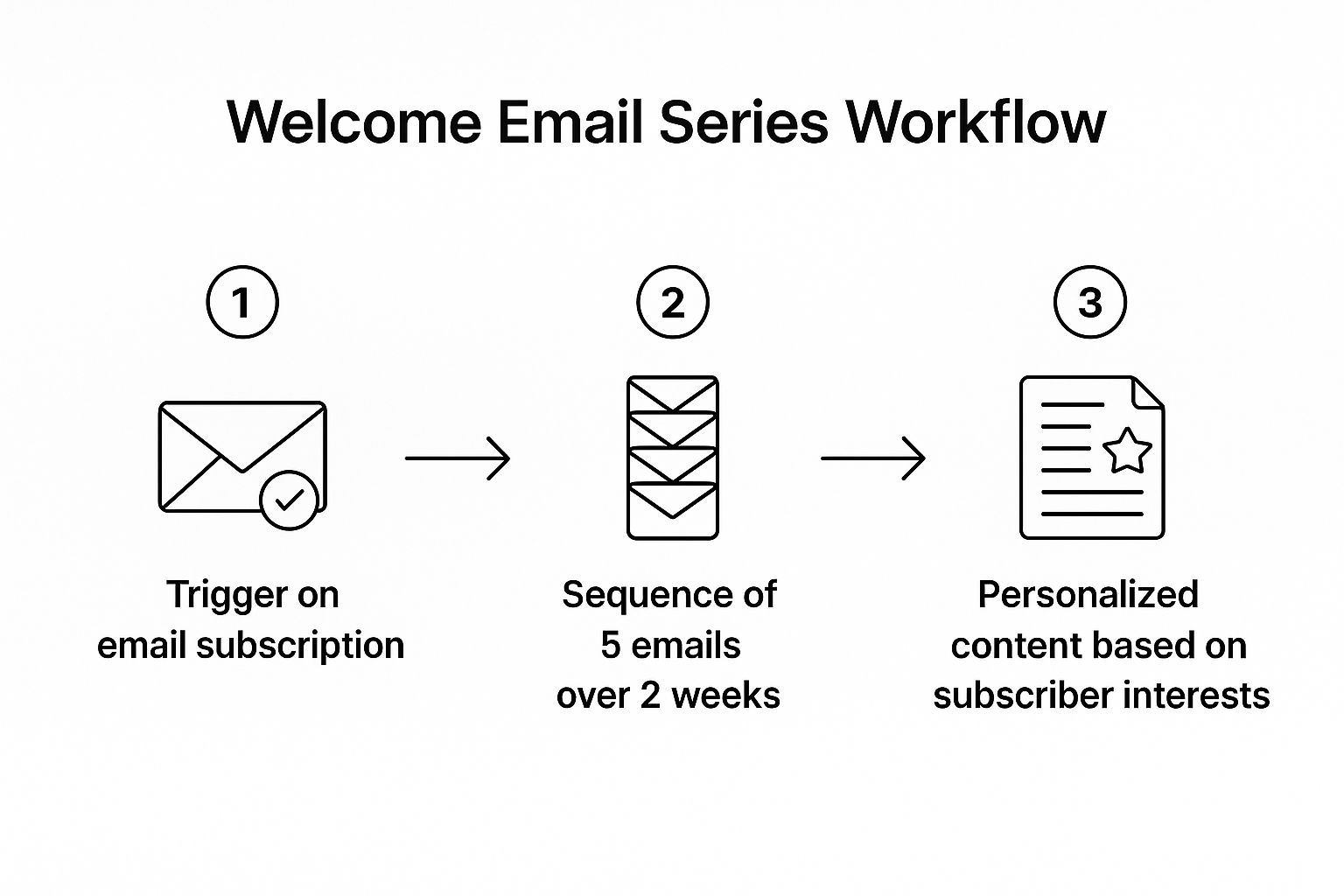
This diagram highlights how a single trigger initiates a multi-step, time-delayed sequence designed to nurture the new subscriber effectively. By personalizing the content based on initial interests, you significantly increase the relevance and impact of your communication.
2. Abandoned Cart Recovery Workflow
The Abandoned Cart Recovery Workflow is an essential e-commerce automation designed to reclaim potentially lost revenue. It is triggered when a user adds items to their online cart but leaves the site without completing the purchase. The primary objective is to re-engage these high-intent shoppers, remind them of the products they considered, and overcome any final hesitations to guide them back to checkout. This process is a critical tool for boosting conversion rates and maximizing return on ad spend.
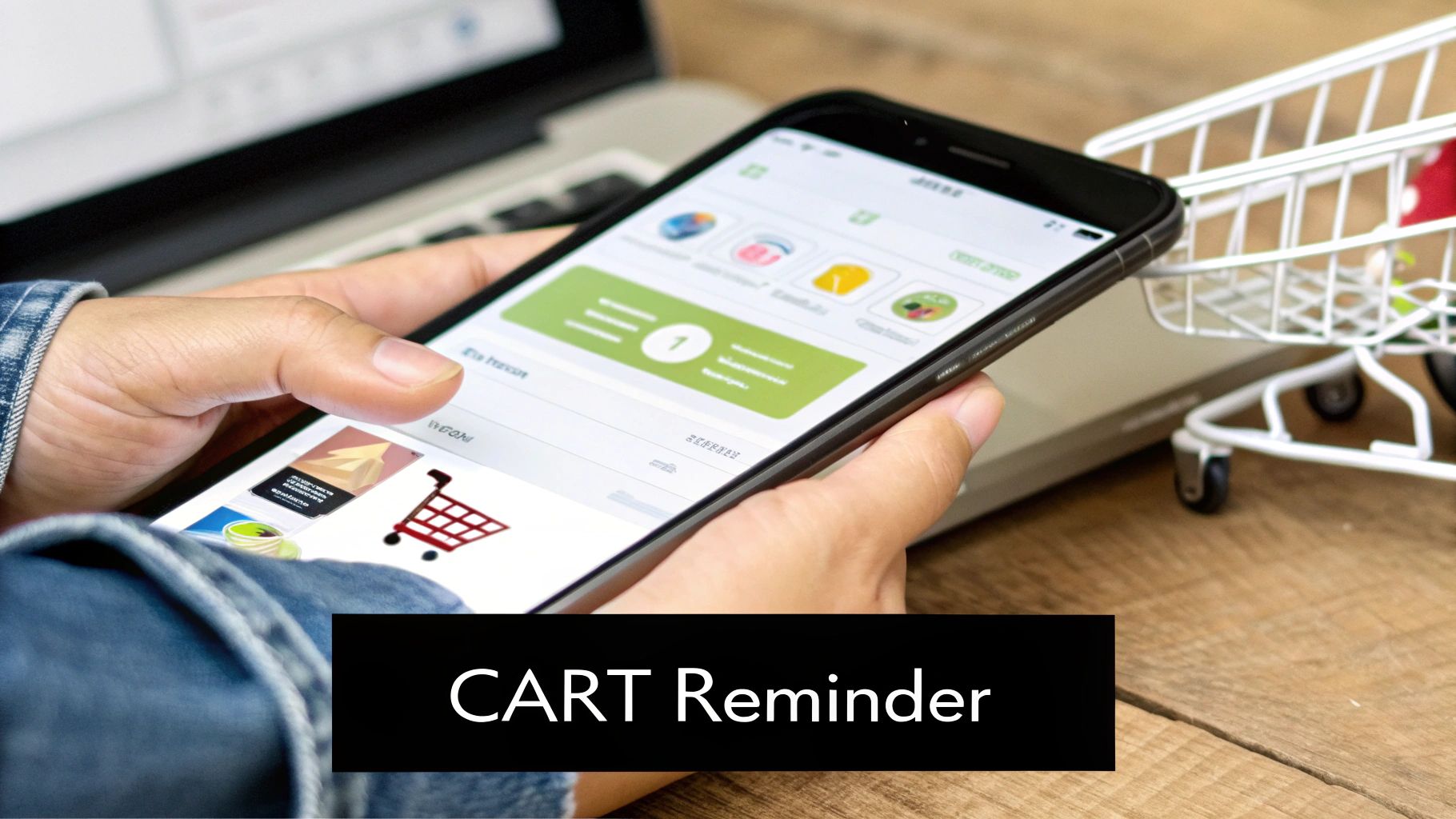
Strategic Breakdown and Implementation
A powerful abandoned cart sequence is more than just a simple reminder. It’s a targeted, psychological nudge that addresses common purchase barriers like shipping costs, price sensitivity, or distraction. For instance, a fashion retailer like ASOS might send a first email showcasing the abandoned items, a second email with styling suggestions, and a final email with a time-sensitive free shipping offer. Similarly, a home goods store like Wayfair could follow up with user-generated photos or room inspiration content to help the customer visualize the product in their own space. By addressing the "why" behind the abandonment, you can significantly improve your chances of recovery.
Actionable Takeaways:
- Timely Follow-Up: Send the first reminder email within 1-3 hours of cart abandonment. This timing is crucial to reconnect while the purchase intent is still high and your brand is fresh in the customer's mind.
- Create Urgency: Strategically use scarcity and urgency in your follow-up emails. Phrases like "Your cart expires soon" or "Limited stock available" can prompt immediate action. A small, time-limited discount can also be a powerful incentive.
- Streamline the Experience: Ensure your reminder emails link directly back to a pre-populated cart. Minimize friction by including high-quality product images and clear call-to-action buttons. This direct approach is key to reducing your customer acquisition cost by converting more of the traffic you've already paid for.
Visualizing the Workflow
This infographic maps out a standard abandoned cart recovery sequence, from the initial trigger of an incomplete purchase to a series of automated, persuasive communications.
The diagram demonstrates how platforms like Shopify or Klaviyo can automate this entire process, using time delays and targeted content to effectively re-engage potential customers and recover otherwise lost sales.
3. Lead Nurturing Drip Campaign
A Lead Nurturing Drip Campaign is one of the most powerful marketing automation workflow examples for systematically building relationships with prospects who aren't ready to buy yet. This workflow is triggered after a lead has engaged with your brand, perhaps by downloading a top-of-funnel resource like an e-book, but hasn't made a purchase. The primary objective is to educate, build trust, and gently guide the prospect through the buyer's journey by delivering a timed sequence of valuable content.
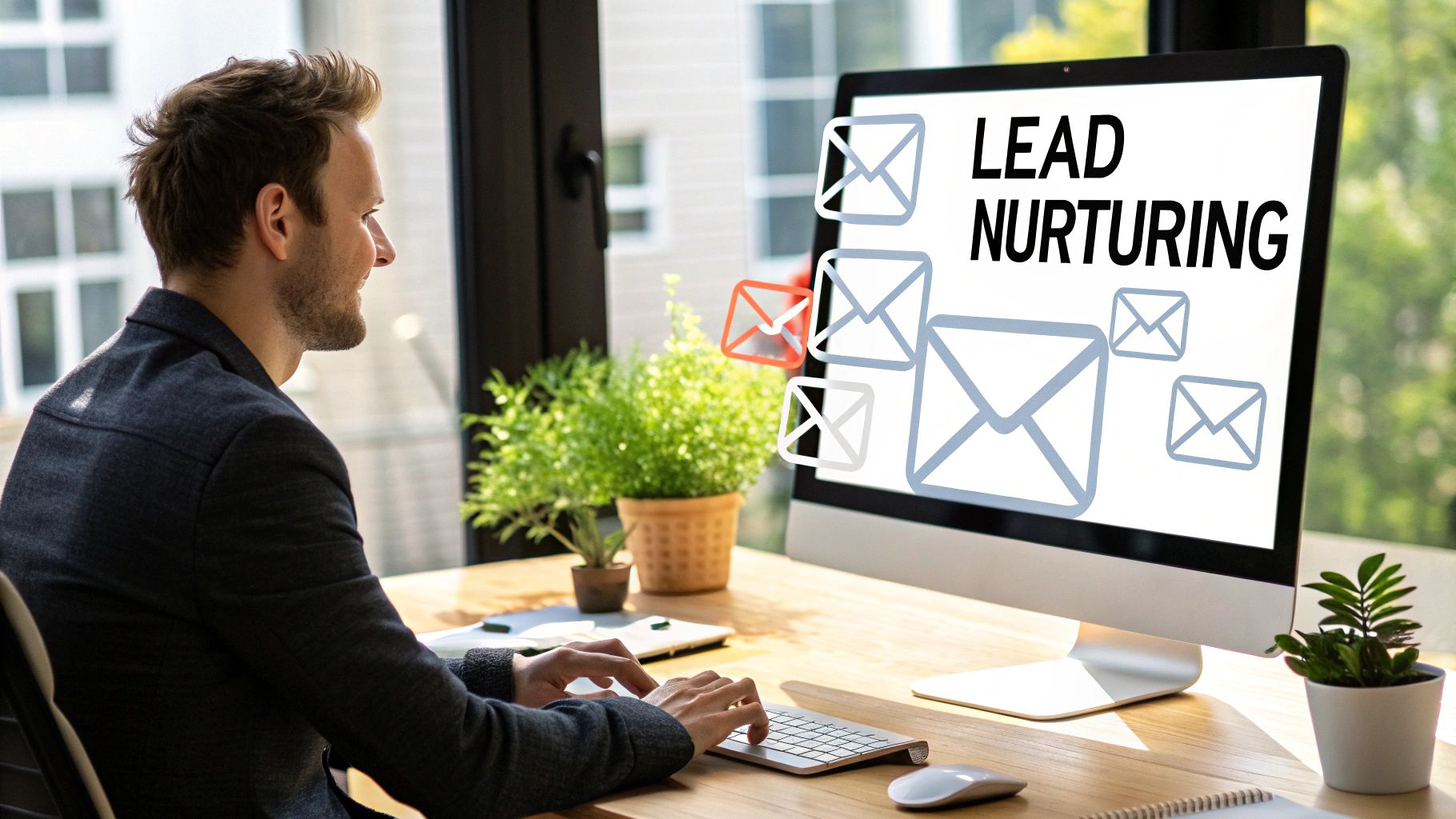
Strategic Breakdown and Implementation
Unlike a welcome series, a lead nurturing campaign is less about introduction and more about education and qualification. The content is carefully mapped to address specific pain points and questions that arise at each stage of the sales funnel. For instance, HubSpot excels at this by offering educational email series on inbound marketing, while Salesforce might send a sequence of guides on CRM implementation. The goal is to position your brand as a helpful authority, making you the obvious choice when the lead is finally ready to make a decision.
Actionable Takeaways:
- Segment and Score: Don't send the same nurture sequence to every lead. Use segmentation based on the initial download or action. Implement lead scoring to track engagement, allowing you to identify and prioritize high-intent prospects for a sales call.
- Map Content to the Buyer's Journey: Your drip campaign should mirror the customer's decision-making process. Start with educational blog posts and case studies (awareness), then move to webinars or product comparisons (consideration), and finally, present a demo or a free trial offer (decision). To delve deeper into this strategy, you can find a comprehensive guide on our blog about automated lead nurturing.
- Automate Lead Qualification: When a lead from a Facebook ad campaign enters your nurturing sequence, use a platform like LeadSavvy Pro to trigger the workflow. As the lead engages with emails and content, your automation platform can update their lead score. Once a score threshold is met, another automation can alert your sales team, ensuring they only engage with the most qualified leads.
4. Post-Purchase Follow-Up Workflow
The Post-Purchase Follow-Up Workflow is a critical marketing automation sequence that begins the moment a customer completes a purchase. Far from being the end of the customer journey, the purchase is an opportunity to deepen the relationship. This automated series is triggered by a transaction and aims to enhance customer satisfaction, reduce buyer's remorse, and encourage long-term loyalty. Its core objective is to transform a one-time buyer into a repeat customer and brand advocate by providing value beyond the initial product.
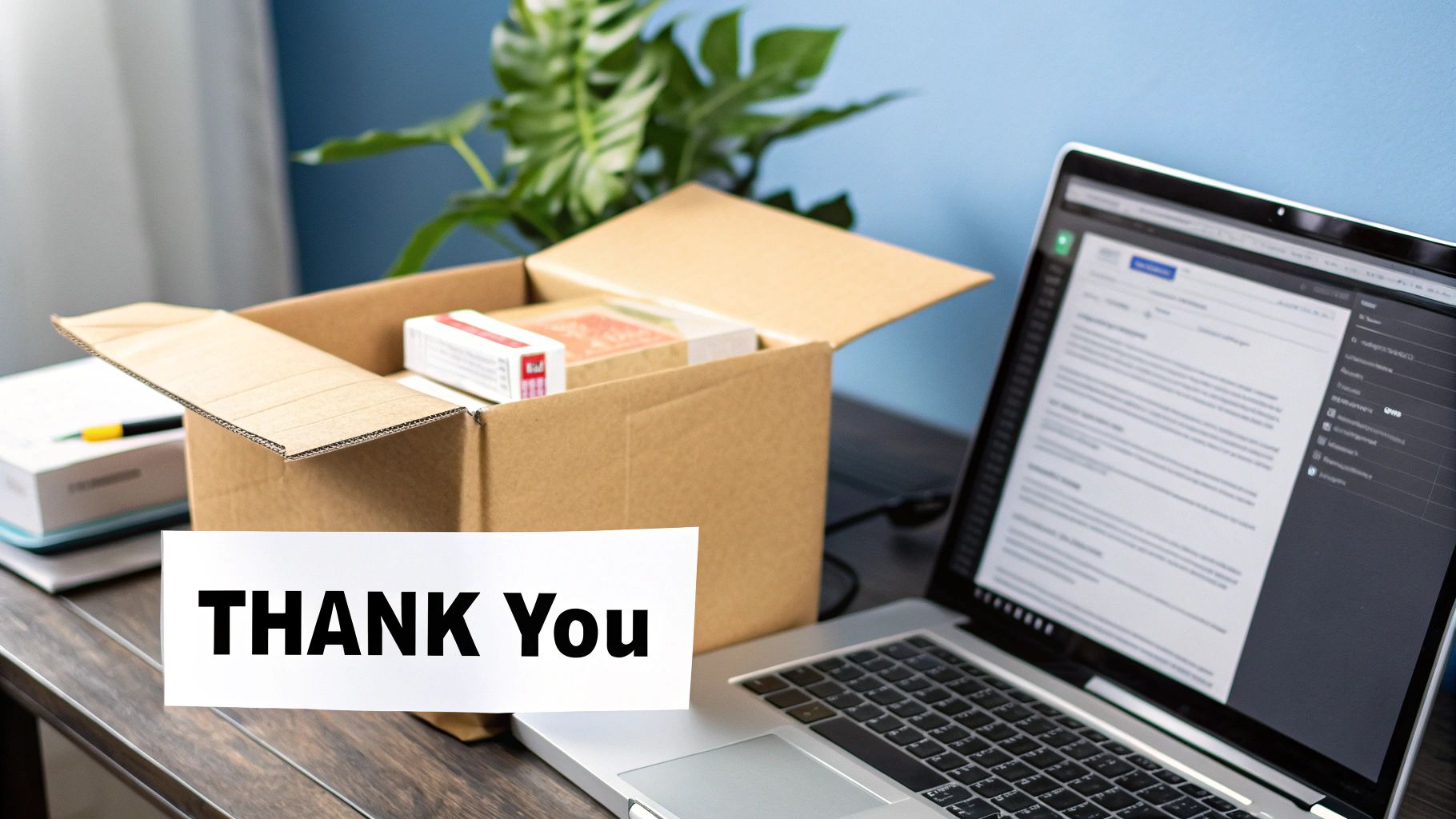
Strategic Breakdown and Implementation
A great post-purchase sequence does more than just send an order confirmation. It’s a carefully orchestrated series of communications that builds confidence and adds value. For instance, after delivering a Peloton bike, the company sends workout recommendations and class suggestions to help new users get started. Similarly, a beauty brand like Glossier might send follow-up emails with beauty routine ideas incorporating the newly purchased product. This strategy keeps customers engaged with the brand and helps them get the most out of their purchase, reinforcing their decision and paving the way for future sales.
Actionable Takeaways:
- Provide Immediate Reassurance: The first email must be an instant order confirmation. This confirms the transaction was successful and sets a professional, trustworthy tone. Follow this with proactive shipping and delivery updates.
- Educate and Add Value: Go beyond the transaction. Send emails with product care instructions, usage tips, or helpful content related to the purchase. For example, a kitchenware store could send recipes to a customer who bought a new pan.
- Time Your Asks Strategically: Wait until the customer has had time to experience the product before asking for a review or feedback. A request sent 1-2 weeks after delivery is often more effective and can be followed by personalized recommendations based on their purchase history.
Visualizing the Workflow
To help you map out this customer retention powerhouse, the following infographic illustrates a standard post-purchase workflow. It shows how the initial purchase trigger can set off a series of value-driven, timed communications that foster loyalty and drive repeat business.
This diagram demonstrates how a purchase action initiates a sequence designed to enhance the customer experience, from immediate confirmation to long-term engagement and feedback collection. Personalizing this flow based on the specific product purchased makes it one of the most effective marketing automation workflow examples for boosting customer lifetime value.
5. Re-engagement Campaign Workflow
A Re-engagement Campaign Workflow is a crucial automated process for maintaining a healthy and active subscriber list. It is designed to reconnect with subscribers or customers who have stopped engaging with your emails or brand over a defined period. The primary goal is to win back their attention and rekindle their interest. This workflow identifies inactive contacts, delivers a targeted series of communications to re-engage them, and ultimately helps you decide whether to retain or remove them from your active list, improving overall deliverability and campaign performance.
Strategic Breakdown and Implementation
Losing a subscriber's attention doesn't mean they are lost forever. A well-executed re-engagement campaign can be highly effective. For instance, Spotify sends personalized "We miss you" emails featuring playlists based on past listening habits, while Grammarly might re-engage inactive users with a fun writing challenge. The strategy is not just about saying "come back"; it's about reminding them of the value you offer and showing that you understand their interests. This process is vital for maximizing the long-term value of every lead you acquire, including those from your paid ad campaigns.
Actionable Takeaways:
- Define Inactivity Clearly: Set a specific trigger based on a lack of engagement (e.g., no email opens or clicks in 90 days). This inactivity period will vary by industry and sales cycle.
- Create a Compelling Offer: The content of your re-engagement emails must be powerful. Use subject lines like "Is this goodbye?" or "A special offer just for you" to grab attention. Offer an exclusive discount, valuable content, or a sneak peek at new features to incentivize a click.
- Automate List Management: When a lead from a Facebook Ad becomes inactive, this workflow can be triggered automatically. If the user re-engages, they can be added back to a main nurturing sequence. If they remain inactive after the campaign, use your automation tool to tag them for suppression or removal, which keeps your lists clean and your engagement rates high.
6. Event-Based Marketing Workflow
The Event-Based Marketing Workflow is an incredibly effective automation strategy that leverages specific dates and customer behaviors to deliver highly personalized and timely messages. This automated sequence is triggered by milestones like a customer's birthday, a subscription anniversary, or a significant holiday. The core objective is to make customers feel individually seen and valued, strengthening their emotional connection to the brand and encouraging repeat business through hyper-relevant offers.
Strategic Breakdown and Implementation
Event-based workflows transform generic marketing into a personal conversation. Rather than broadcasting one-size-fits-all promotions, this strategy waits for a meaningful trigger in the customer's life. For example, Starbucks' iconic birthday reward program, which offers a free drink, is a masterclass in this approach. It creates a moment of delight that reinforces brand loyalty. Similarly, Spotify’s annual "Wrapped" campaign uses a year-end event to deliver a deeply personal summary, generating massive organic sharing and engagement. This approach is powerful because it's rooted in data the customer has already shared, making the interaction feel authentic, not intrusive.
Actionable Takeaways:
- Collect Key Dates Early: Use your initial lead capture forms, such as those in a Facebook Lead Ad campaign, to ask for important dates like birthdays. This data is the fuel for your event-based workflows.
- Automate Timely Delivery: The magic is in the timing. Set up your automation to send birthday greetings on the actual day or anniversary emails on the exact date of a customer's first purchase. This precision makes the gesture feel special.
- Make Offers Exclusive: Frame your event-based promotions as a unique reward. Using phrases like "a special birthday gift for you" or "an exclusive anniversary offer" increases the perceived value and drives a higher conversion rate. Learn more about effective marketing automation implementation to set these campaigns up for success.
7. Webinar Marketing Automation Workflow
The Webinar Marketing Automation Workflow is a powerhouse for businesses that use educational content to generate high-quality leads. This multi-stage automated campaign handles everything from promoting the event and managing registrations to sending timely reminders and executing post-webinar follow-ups. The trigger is typically a user registering for a webinar, often through a landing page promoted via Facebook ads. The primary goal is to maximize attendance, engage participants effectively, and convert them into qualified leads or customers.
Strategic Breakdown and Implementation
A successful webinar workflow does more than just secure registrations; it builds anticipation and ensures a smooth experience for every registrant. For example, marketing experts like Amy Porterfield and Russell Brunson have popularized funnels where the webinar is the central conversion event. They use automation to create a sense of urgency, deliver pre-webinar value to keep registrants engaged, and segment follow-up communication based on behavior, such as attending versus not attending. This strategic segmentation is critical for converting interest into action.
Actionable Takeaways:
- Segment Your Follow-Up: Create two distinct post-webinar email paths. Attendees receive a thank you, a survey, and an offer related to the webinar content. No-shows receive an email with a link to the replay, creating another opportunity to engage them.
- Automate Reminder Cadence: Schedule a series of reminder emails to go out one week before, one day before, and one hour before the webinar starts. This simple automation dramatically boosts live attendance rates.
- Integrate Ad Campaigns Directly: When promoting your webinar with Facebook Lead Ads, use a tool like LeadSavvy Pro to instantly send registration data to your webinar platform (e.g., GoToWebinar, Zoom) and your email service provider. This seamless integration triggers the confirmation and reminder sequence immediately, eliminating manual work and potential delays.
Visualizing the Workflow
To help you understand the moving parts of this powerful lead generation engine, the video below breaks down the core components of a high-converting webinar funnel.
This process illustrates how a single registration can initiate a complex yet fully automated journey. By tailoring messages to attendee behavior, you create a personalized experience that nurtures registrants toward your ultimate conversion goal, making this one of the most effective marketing automation workflow examples for B2B and B2C companies alike.
7 Key Marketing Automation Workflow Comparisons
| Workflow | Implementation Complexity 🔄 | Resource Requirements 🔄 | Expected Outcomes 📊 | Ideal Use Cases 💡 | Key Advantages ⭐ |
|---|---|---|---|---|---|
| Welcome Email Series Workflow | Moderate – requires timing & personalization | High – content creation and CRM integration | High engagement (82% open rate), early conversions | Onboarding new subscribers/customers | Builds strong brand awareness, reduces unsubscribes |
| Abandoned Cart Recovery Workflow | High – needs tracking, multi-channel integration | Moderate to high – tech integration & creatives | Recovers 10-15% carts, boosts revenue by 5-10% | E-commerce cart abandonment recovery | Recovers lost sales, provides purchase insights |
| Lead Nurturing Drip Campaign | High – complex segmentation and multi-channel | High – content and CRM/sales alignment | Increases qualified leads by 451%, shortens sales cycle | B2B lead qualification and education | Improves lead quality, scalable relationship building |
| Post-Purchase Follow-Up Workflow | Moderate – requires fulfillment integration | Moderate – content and timing management | Boosts customer lifetime value by 25-30%, increases reviews | Post-sale engagement and retention | Enhances satisfaction, drives repeat purchases |
| Re-engagement Campaign Workflow | Moderate – segmentation and timing critical | Moderate – discounting and content efforts | Recovers 5-10% inactive users, improves deliverability | Win-back inactive subscribers | Cost-effective, maintains sender reputation |
| Event-Based Marketing Workflow | Low to moderate – data collection & timing | Moderate – personalization and reminders | 30-50% higher opens, 481% higher transaction rates | Birthdays, anniversaries, milestones | Creates emotional buyer connections, easy to scale |
| Webinar Marketing Automation | High – multi-step coordination & content heavy | High – tech integration and content creation | Increases attendance 40-60%, converts leads 20-30% better | Webinar promotion and lead generation | Automates complex workflows, detailed engagement data |
From Examples to Execution: Your Next Steps in Automation
Throughout this guide, we have journeyed through seven distinct and powerful marketing automation workflow examples. From the initial handshake of a welcome series to the critical recovery of an abandoned cart and the strategic re-engagement of dormant contacts, each blueprint demonstrates a core principle: automation transforms marketing from a series of disjointed actions into a cohesive, intelligent system. The underlying strategy is what separates a mediocre automation from a high-performing growth engine.
The common thread woven through these examples is the move from manual, reactive tasks to proactive, trigger-based engagement. We’ve seen how a single user action, like downloading a lead magnet or registering for a webinar, can initiate a sophisticated sequence of events designed to guide them seamlessly through the customer journey. This strategic approach ensures every interaction is timely, relevant, and moves the relationship forward.
Key Takeaways for Immediate Application
Mastering marketing automation isn't about implementing every workflow at once. It's about strategic selection and flawless execution. Here are the most critical takeaways you should focus on:
- Strategy Over Software: The tool is only as good as the plan behind it. Before building anything, clearly define your objective, identify the trigger, and map out the ideal communication sequence. What do you want the user to do, and what steps will get them there?
- Speed is Non-Negotiable: For workflows triggered by Facebook Lead Ads, the window of opportunity is incredibly small. The effectiveness of your lead nurturing, webinar follow-up, or post-purchase sequence depends on instant action. Delays kill momentum and cool down warm leads.
- Personalization Drives Performance: Successful automation feels personal, not robotic. Use the data you collect, such as names, interests, or purchase history, to tailor your messaging. The difference between "Dear Customer" and "Hi [FirstName], here's that guide you requested" is massive.
Your Actionable Roadmap to Automation Success
Reading about these marketing automation workflow examples is the first step; now it's time for execution. Don't let the possibilities overwhelm you. Follow this simple plan to get started:
- Identify Your Biggest Bottleneck: Which area of your marketing is causing the most friction or requires the most manual effort? Is it lead follow-up? Cart abandonment? Post-purchase engagement?
- Choose One Workflow: Select the single workflow from this article that directly addresses your chosen bottleneck. Focus on mastering this one process first.
- Map and Build: Sketch out your version of the workflow. Define your specific triggers, time delays, email content, and goals. Then, build it in your automation platform.
- Test and Measure: Before going live, run tests to ensure every step fires correctly. Once active, closely monitor key metrics like open rates, click-through rates, and conversion rates to gauge its impact.
By adopting this methodical approach, you can systematically build a powerful automation infrastructure that saves you time, nurtures leads effectively, and drives sustainable business growth. You are no longer just running campaigns; you are building an intelligent marketing machine.
Ready to close the gap between your Facebook ads and your automated workflows? LeadSavvy Pro provides the instant, reliable bridge you need to ensure your triggers fire the moment a lead comes in. Stop losing valuable leads to delays and start your free trial of LeadSavvy Pro today to experience the power of immediate connection.

